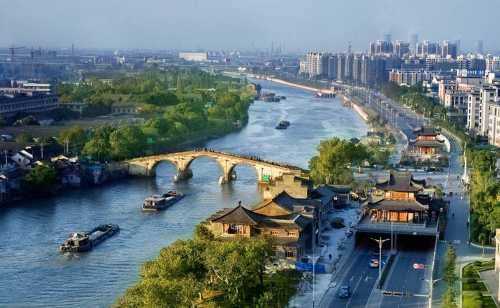Popular Trip Moments
Don't miss it! 2025 Xixi Wetland Lantern Festival, miss it and wait a year | Only 1% of people know! The secret spots of West Lake can only be reached by chartering a boat! | China Umbrella Museum | Gongchen Bridge Historic District | Visit to the China National Silk Museum in Hangzhou 🧵✨ | Tonglu | Hidden in the mountains | No crowds! The most comfortable city walk route around West Lake! | 6-Day City Walk Itinerary for Suzhou, Nanjing, and Wuxi | Hidden Spring Retreats in Hangzhou | Beautiful Mountain Lodges, Maximum Healing Power! | Hangzhou next month is unbelievably beautiful | Hangzhou! Hotels within walking distance of West Lake! | 6 Amazing Cities for Reverse Travel in March | This French-style loft hotel in Hangzhou is so beautiful! | Stop cashing in on Dunhuang-style light shows! | Revisiting the Red Plum Blossoms | Tang Clan Ancestral Hall, Datangwu New Village, Hangzhou, Zhejiang | Finally, I took a photo of the cyber Tang Dynasty titanium alloy building | Two Days and One Night in Qiandao Lake | Travel Guide | Visit the "Hidden Gem of Hangzhou" with 50,000 Plum Trees in 2025! | Jiangsu, Zhejiang, and Shanghai Surrounding Tours | This park is so fun you won't want to go home | This sukiyaki restaurant by West Lake in Hangzhou has me hooked | ZSmart Hotel! Hangzhou Wulin Square! | Qiandao Lake Manor Hotel, come here to be a princess | This is the hotel to stay at in Hangzhou for a vacation! | 2-Day Trip to Hangzhou! | 2-Day Winter Trip to Hangzhou | 3-Day Winter Vacation in Suzhou, Wuzhen, and Hangzhou: Beautiful Route Recommendations | Take Zhao Lusi's advice and check in to the most beautiful homestay in Hangzhou | 5-Day Winter Tour of Shanghai, Suzhou, and Hangzhou: So Beautiful You Won't Want to Leave | East China 5 Cities + Wuzhen 6-Day Tour: The Ultimate Guide to Jiangnan Water Towns
Popular Travel Types
Recommended Attractions at Popular Destinations
Bangkok attraction near me | Manila attraction near me | Tokyo attraction near me | Taipei attraction near me | Hong Kong attraction near me | Seoul attraction near me | Kuala Lumpur attraction near me | Los Angeles attraction near me | Shanghai attraction near me | New York attraction near me | Shenzhen attraction near me | Osaka attraction near me | Singapore attraction near me | London attraction near me | Guangzhou attraction near me | San Francisco attraction near me | Beijing attraction near me | Macau attraction near me | Bali attraction near me | Jakarta attraction near me | Paris attraction near me | Ho Chi Minh City attraction near me | Istanbul attraction near me | Phuket attraction near me | Chicago attraction near me | Seattle attraction near me | Toronto attraction near me | Orlando attraction near me | Cebu attraction near me | Chiang Mai attraction near me
Popular Attractions
Zhangjiajie Grand Canyon | Guangfulin Relics Park | Te Puia - Rotorua, NZ | Universal Studios Japan | Prince Kung's Mansion | Southern Glacier Helicopter Flight Experience | Yu Garden | Ocean Park Hong Kong | Universal Beijing Resort | Jingan Temple | Onsen Hot Pools | Petaling Street Market | Suzhou Museum | Tokyo Skytree | Bangkok Shooting Range | Red Gate Palace | Pasar Malam | Cuihua Mountain·Qinling Zhongnanshan Unesco Global Geopark | SFX Cinema Central Pattaya | Wangxian Bridge | sejarah cisoka | CSI Sushanthi Church, Heggeri | 奧宮遙拜所 | Református Templom Szeghalom | LUNA | Tuana | Rond Point zinsou 1 | ISKCON of Houston - Temple and Cultural Center | Chaparral Park | Alpe Fillar
Popular Restaurants in Hangzhou
JIN SHA | 28 HuBin Road | GUIYU RESTAURANT | 美在江南·臻宴(黄龙店) | Jiexianglou Restaurant | YUE | LI'AN | Dining Room | 杭州中科久泰饭店·久泰阁 | Man Shu Kaiseki | Charencun Tea House | WL BISTRO | La Villa Restaurant | Ambré Ciel | Nettare Restaurant & Bar | Hangzhou House | JIANG ZHE HUI CHINESE CUISINE | Wild Yeast | Fang Lao Da | 杭州滨江银泰喜来登大酒店·采悦轩中餐厅 | Xinbailu Restaurant (hubinyintai in77C qu) | 杭州逍遥庄园·湘湖山房·云从全日餐厅 | NongTang Li (LongJing) | ALOR VALLEY | Sheng yan biao zhi Restaurant | XINZHOUJI | HANGZHOU RESTAURANT | 杭州如野民宿(西湖风景区太子湾公园店)·如野·玻璃房子·山野食记(西湖虎跑满陇桂雨店) | XI XI XI LAI DENG | 十八棵(老龙井)御茶园(老龙井店)
Popular Ranked Lists
Popular Best Things to Do in Fufeng County | Popular Luxury Hotels Near Nago | Popular Luxury Hotels Near Moragalla | Top 3 Best Things to Do in Jiangmen | Popular Premium Hotels in Serrara Fontana | Top 20 Local Restaurants in Chaozhou | Top 10 Luxury Hotels in Attica | Popular Best Things to Do in Gongliu | Popular Best Things to Do in Jiashan | Popular Best Things to Do in Jianshi | Top 15 Local Restaurants in Taipei | Popular Luxury Hotels Near Milas | Popular Best Things to Do in Lincang | Top 7 Best Things to Do in Quito | Top 20 Local Restaurants in Berlin | Top 19 Local Restaurants in Shijiazhuang | Popular Luxury Hotels in Berchtesgaden | Top 4 Best Things to Do in Changzhi | Popular Best Things to Do in Ghajnsielem | Top 20 Local Restaurants in London | Popular Best Things to Do in Ningming | Popular Best Things to Do in Qianwei County | Top 4 Luxury Hotels in Leningrad Oblast | Popular Local Restaurants in Wuhan | Top 19 Local Restaurants in Changchun | Top 11 Local Restaurants in Phu Quoc Island | Top 20 Local Restaurants in Lijiang | Popular Best Things to Do in Jiaozuo | Top 19 Local Restaurants in Athens | Top 14 Local Restaurants in Ho Chi Minh City
Payment Methods
Our Partners
Copyright © 2025 Trip.com Travel Singapore Pte. Ltd. All rights reserved
Site Operator: Trip.com Travel Singapore Pte. Ltd.
Site Operator: Trip.com Travel Singapore Pte. Ltd.


























